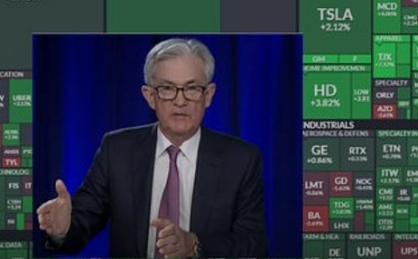Dominance in AI and Data Center Markets: Nvidia has established itself as a leader in AI processing, particularly through its advanced GPUs (Graphics Processing Units) such as the A100 and H100 models. These GPUs are critical for AI workloads, especially in data centers. Nvidia’s Data Center segment, which includes AI applications, accounted for a significant portion of the company’s revenue, with substantial year-over-year growth. This segment alone grew by 427% year-over-year, driven by the adoption of Nvidia’s technology across industries including cloud computing, healthcare, financial services, and automotive sectors Nasdaq andSmartAsset
Nvidia, the leading giant in AI chip design and software, is set to report its second-quarter earnings on Wednesday, a moment eagerly anticipated by investors and analysts alike. With Nvidia’s stock surging over 163% this year and 60% in the last six months, all eyes are on the company to see if the AI trade will continue to dominate the market narrative in the second half of the year.
For this quarter, Nvidia is projected to report adjusted earnings per share (EPS) of $0.65 on a staggering $28.7 billion in revenue. This would represent a dramatic 139% increase in EPS and a 113% surge in revenue compared to the same quarter last year, when the company reported EPS of $0.27 on $13.5 billion in revenue. The substantial growth is a testament to Nvidia’s dominance in the AI sector, where it controls an estimated 80% to 95% of the market.
Nvidia Effect? AI-Based Cryptos Post Handsome Weekly Gains As Countdown For Tech Giant’s Q2 Earnings Begins $FET $AGIX $FET https://t.co/sCM4hTQVN4 via @Benzinga
— T3SLA🌟김회장 (@Johnkim26391993) August 27, 2024
A significant portion of Nvidia’s anticipated revenue growth comes from its data center business, which is expected to bring in $24 billion this quarter, marking a 142% increase from the $10.3 billion reported in the same period last year. However, this growth is a step down from the 426% increase seen last quarter and the 408% rise in Q4 of last year, indicating a gradual deceleration.
Despite reports of a potential delay in the shipment of Nvidia’s next-generation Blackwell chips, market analysts remain optimistic. Firms like Goldman Sachs, KeyBanc, and Loop Capital believe that Nvidia’s short-term performance won’t be significantly affected, given the improving yields from its current Hopper chip production. Loop Capital’s managing director, Ananda Baruah, mentioned that even with a possible 120-day delay for Blackwell, increased Hopper production could offset any shortfall.
Nvidia’s rivals are also making strategic moves to capture a share of the AI market. AMD, for example, recently announced its acquisition of ZT Systems for $4.9 billion, aiming to strengthen its position in building AI system servers. While this could boost AMD’s sales, experts like Stifel’s Ruben Roy argue that Nvidia remains the best positioned to benefit from the ongoing growth in infrastructure spending related to AI.
Nvidia $NVDA earnings is coming in less than 48 hours and this is what the market expects:
Q2 Revenue $28.7bn v $13.5bn Q2 last year (Q1 Revenue was $26bn)
Q2 Net Income $15.02bn v $6.19bn Q2 last year (Q1 was $14.88bn)
Nvidia YTD +163% 🟢
Nvidia Last 5 days -2% 🔴
Are you… pic.twitter.com/RI5kusc0Z2
— Dividend Talks on YouTube (@DividendTalks) August 27, 2024
Beyond its leadership in AI, Nvidia is expected to report gaming revenue of $2.7 billion for the quarter. Once the company’s primary revenue driver, gaming has now become a smaller, though still significant, part of Nvidia’s overall business portfolio, which also includes professional visualization and automotive sectors.
As Nvidia prepares to release its earnings, the tech world watches closely. The company’s results could have far-reaching implications not just for its own stock, but for the broader tech market and the future direction of AI-related investments.
More Information
- Expansion into Emerging AI Markets: Nvidia’s growth strategy includes expanding its presence in emerging markets for AI, such as autonomous vehicles and AI-driven enterprise applications. Jensen Huang, Nvidia’s CEO, has emphasized that the company is poised to drive the “next industrial revolution,” focusing on creating AI factories and transforming traditional data centers into AI-focused infrastructure. This strategic direction is expected to sustain Nvidia’s growth as AI becomes more integral to various industries SmartAsset
- Innovative Product Development: Nvidia is heavily investing in the development of new AI platforms and models. For instance, their RAG platform, which is designed for building AI agents, is anticipated to be a key growth driver, potentially contributing significantly to data center sales. This ongoing innovation positions Nvidia to maintain its competitive edge in the rapidly evolving AI landscape markets.businessinsider.com
- Strong Financial Performance and Market Confidence: Nvidia’s financial performance has been stellar, with record revenues and strong growth across its core segments. The company’s recent 10-for-1 stock split, aimed at making its shares more accessible, reflects confidence in its growth trajectory. Analysts remain optimistic about Nvidia’s prospects, with expectations of continued strong demand for its AI and high-performance computing products SmartAsset
- Challenges and Competitive Landscape: While Nvidia is currently dominant, experts note that the competitive landscape could shift as other companies develop their AI chips and models. Some analysts caution that while Nvidia’s growth is impressive, the tech industry’s dynamics could introduce new competitors and potential challenges in the future SiliconANGLE
Key Points:
i. Nvidia is expected to report strong second-quarter earnings, with a projected 139% increase in EPS and a 113% rise in revenue.
ii. The company’s data center business is a key revenue driver, although its growth rate has slowed compared to previous quarters.
iii. Despite delays in its next-generation chip shipments, analysts remain optimistic about Nvidia’s short-term performance due to increased current chip production.
iv. Nvidia’s rivals, like AMD, are also making moves in the AI space, but Nvidia is still seen as the leader.
v. Beyond AI, Nvidia continues to generate significant revenue from its gaming segment, though it now plays a smaller role in the company’s overall financial story.
Conner T – Reprinted with permission of Whatfinger News



